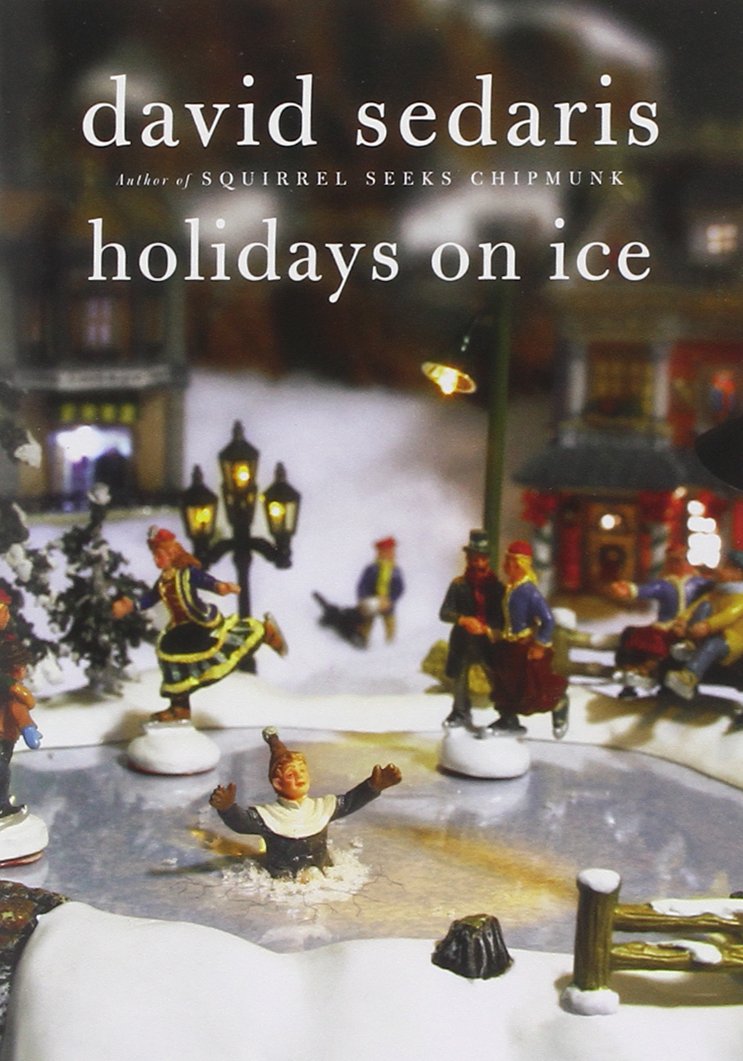In honor of the upcoming holidays, Reads beat writers share some of their favorite works for the year’s end.
“Holidays on Ice” by David Sedaris — Scott Stevens
With no campus housing for the winter holidays, some of you will have no other choice but to return from whence you came — your parents’ house. If you find winter with family as ridiculous as David Sedaris does, you’ll enjoy his personal essay and short story collection “Holidays on Ice.” Sedaris ridicules the strained cheer we often have to put on during the holidays, as experienced by Mrs. Dunbar in the story “Season’s Greetings to Our Friends and Family!!!” There, our lead character slowly goes berserk as she discovers her husband’s infidelity, his secret prostitute stepdaughter and her drug-addict daughter’s pregnancy — enduring it all with a jolly smile. In his personal essay “SantaLand Diaries,” Sedaris entertains us with his experience working as an elf in a Macy’s department store. Wherever you find yourself this winter break, stave off the insanity with this hilarious book!
“The Girl With a Pearl Earring” by Tracy Chevalier — Maya Czeneszew
“The Girl With a Pearl Earring” by Tracy Chevalier offers a closer look behind the concentrated, haunting gaze of Johannes Vermeer’s 1665 painting. We follow Griet, the subject of the painting, and her experience working as a maid in the Vermeer household. She soon becomes interested in her employer’s artistic activities but struggles to integrate into the Vermeer household and finds it difficult to reconcile her new life as a maid with her previous, simpler lifestyle. Although the novel is primarily set within the Vermeer household, Chevalier masterfully crafts an atmosphere fraught with tension, subtle tragedy and novelty, bringing Vermeer’s masterpiece to life as well as the burgeoning world behind its creation.
“Heart and Brain” by Nick Seluk (The Awkward Yeti) — Shana Hadi
First started as a gag-a-day webcomic in 2012, the ongoing series (collected in “Heart and Brain” in 2015) follows the life of Lars, a socially awkward yeti, and his anthropomorphized heart and brain. Heart and Brain individually represent romantic ideals and realistic pragmatism, with Heart chasing its emotions and orange-winged butterflies while Brain concerns itself with adult responsibility and the “daily grind.” And with cute kittens, pineapple-themed devices, quips on caffeine and the perils of a literal brick-wall plan (Brain creates the wall, Heart jumps right through it), the comics are fun, relatable and deeply touching. The opposing characters of Heart and Brain illustrate well-known dichotomies, whether introversion and extroversion, fact or feeling, but their continued friendship and daily adventures demonstrate how both are necessary for Lars, and the reader, to thrive.
“Erased” by Kei Sanbe — Mark York
I have never seen snow before, nor do I ever care to. I have heard enough horror stories to conclude that winter is a mistake and we would all be better off abolishing it. In the comforts of fantasy, however, there is a sort of paradoxical allure to the season; winter is harsh, but whimsical; cold, yet … warm? This strange, unique mesh of feelings is utilized perfectly in the manga (and later, anime) series, “Erased.” The story follows a struggling manga writer named Satoru Fujinuma who is earning a “D+” in adulthood at best. When he was a kid, a serial killer kidnapped and killed three of his classmates, and he’s still a bit shook by that. But when he is supernaturally dragged back in time to his eight-year-old self, Satoru now works on stopping these crimes before they happen. It is a thrilling mystery, but that is not why I want to talk about it here. The glum days of adulthood take place in summer, while the innocent days of childhood are in a thick winter — one might have expected the opposite. Yet, manga writer Kei Sanbe twists our perception of a seemingly oppressive winter, just as our protagonist sees his childhood in a different light. As Satoru makes the connections and seizes the opportunities he’d neglected as a child, the reader is exposed to the awe and beauty of the setting, and everything from winter foxes scurrying about to the lure of a fresh bowl of soup prepared by a loving mother is just so feel-good. I cannot believe I am saying this, but if you ever want to escape shorts-weather and the California climate, pick up this manga series … and not the anime. Well, no, that’s not entirely fair; the anime is really good too. Just skip the last two episodes … and the first episode … and, uh … look, email me and I will give you a chart or something.
Contact Reads Desk Editor Mark York at mdyorkjr ‘at’ stanford.edu.
